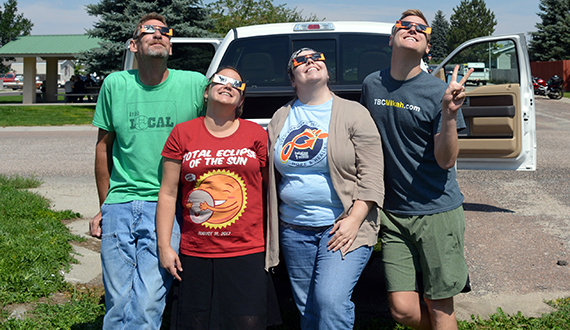
Former Rotary Scholar Mikah Meyer, right, views the solar eclipse with friends.
By Mikah Meyer, former Rotary Scholar
Have you ever seen a 360-degree sunset? If you’re like me and spend a lot of time outdoors, you know that doesn’t make sense. The sun rises in the east and sets in the west, creating a blinding view as you drive east in the morning and a radiant sunset full of colors in the west in the evening. But a 360-degree sunset? Sounds like science fiction. But it’s not.
Fiction, anyway. It is science, which allowed scientists to predict that on Monday, 21 August, we would be able to view a total solar eclipse on a “path of totality” from the jagged coast of Oregon to the brackish marshes of South Carolina. Having been in both those places this year as part of my world record attempt road trip to all 417 National Park Service sites, everyone naturally asked at which national park I’d be viewing this rare event.
I had planned on being at Agate Fossil Beds National Monument in northwest Nebraska. But days before the eclipse, the forecast predicted clouds. Having just seen the surreal sunsets of Badlands National Park in South Dakota, …read more
Source:: Rotary International Blog
Leave a Reply
You must be logged in to post a comment.